Exploring Burgos and León along the Camino of Santiago
This post may contain affiliate links to products or services I'm happy to recommend. If you click on an affiliate link and then make a purchase, Artsy Traveler may earn a small commission at no cost to you. Thank you!
Burgos and León are both fascinating cities located along the Camino of Santiago in northern Spain. Guest poster Elizabeth Petrie spent time in Burgos and León during her journey along the Camino of Santiago.
In this post, Elizabeth shares what to see and do in two of northern Spain’s most beautiful—and often under-visited—cities.
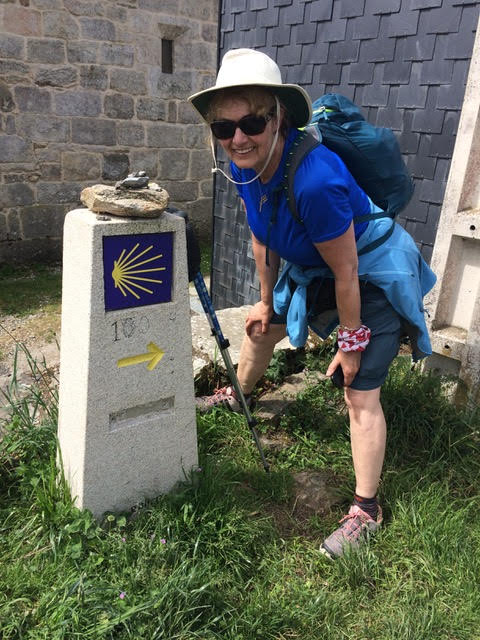
Exploring Burgos
Burgos is the provincial capital of Castilla y León in northern Spain. Its location on the Camino de Santiago route makes it a natural stopping point for pilgrims traveling the Way. This gorgeous medieval city is well worth a day or two of any traveler’s time.
If you’re traveling in northern Spain, put Burgos on your itinerary. Major sights include:
- One of Spain’s most magnificent cathedrals
- A castle
- An atmospheric old city
- Excellent museums, including the world-class Museo de Evolución Humana
- The wonderfully photogenic Arco de Santa Maria
- Wonderful food.
Museo de Evolución Humana
The Museo de Evolución Humana (Museum of Human Evolution) is simply terrific and a highlight of our travels in northern Spain. The modern glass construction with high open spaces houses three floors of authentic and reproduction artifacts, including bones, skulls, animal jaws, tools, and portable art.
Adults and kids alike enjoy the interactive displays and quizzes, the videoclips of recent discoveries, the various re-enactments and interpretations of early humans’ social behaviours, and marvellous representations of various members of Australopithecus and Homo.
The museum also includes exhibits on Atapuerca, the archaeological site north of Burgos. Here, Europe’s oldest human fossil remains were discovered in 2007. We walked past Atapuerca on our way into Burgos.
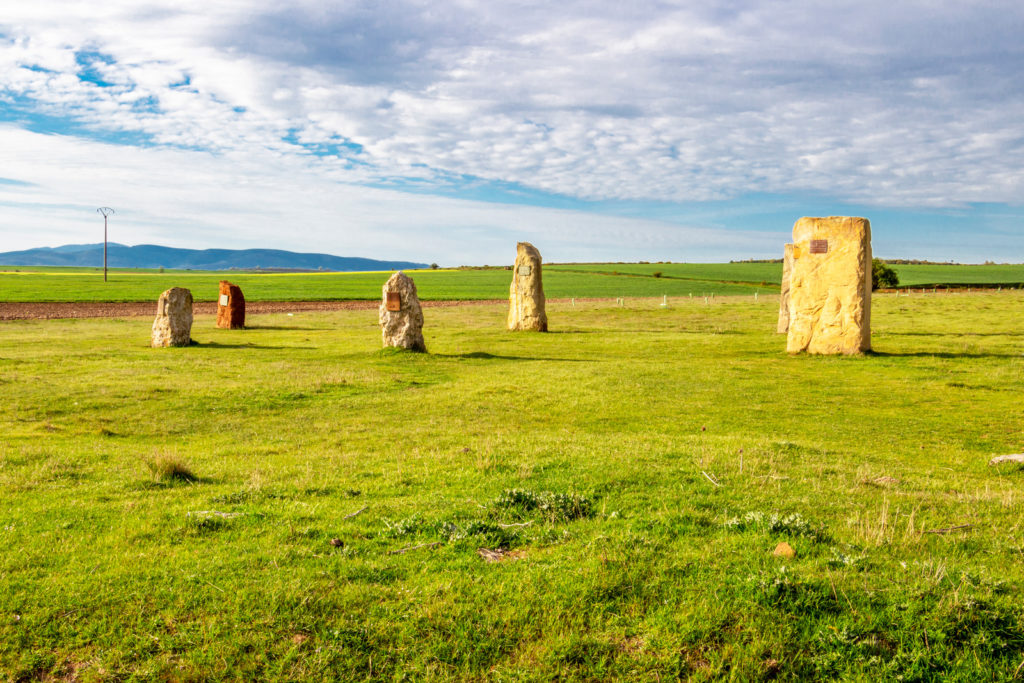
Lucky for us, the museum was almost empty. We were able to spend as much time as we liked in front of the various displays and interactive activities.
Statue of Rodrigo Díaz de Vivar
On your way from the museum back to the central plaza in Burgos, you pass a statue of hometown boy Rodrigo Díaz de Vivar, better known as El Cid, who was born in Burgos in 1043 and died in 1099.
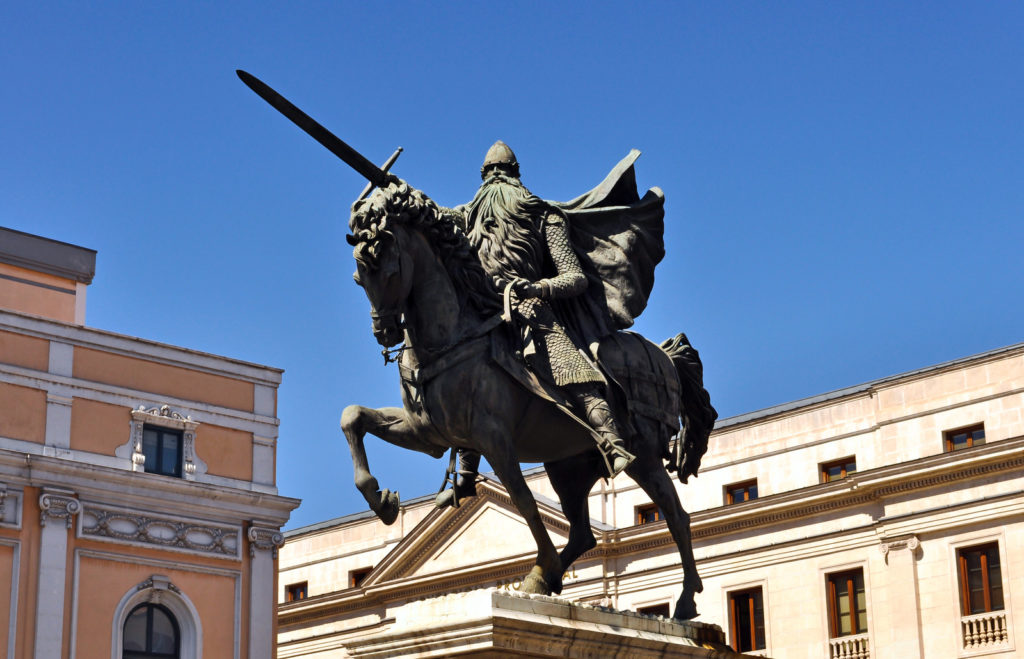
El Cid was a Castilian knight and warlord who became a Spanish folk hero and national icon as a result of his service in the armies of both Christian and Muslim rulers, and his temporary conquest of Valencia. El Cid is the protagonist in the most significant medieval Spanish epic poem, El Cantar de Mio Cid.
The Cathedral of Burgos
The 13th-century Cathedral of Burgos—a UNESCO World Heritage Site—is massive, incorporating the church itself, the cloisters, the Bishop’s Palace, and part of the original city walls. The interior has three naves separated by rows of huge columns and flanked by fifteen side chapels containing altars, tombs, relics, and precious artifacts.
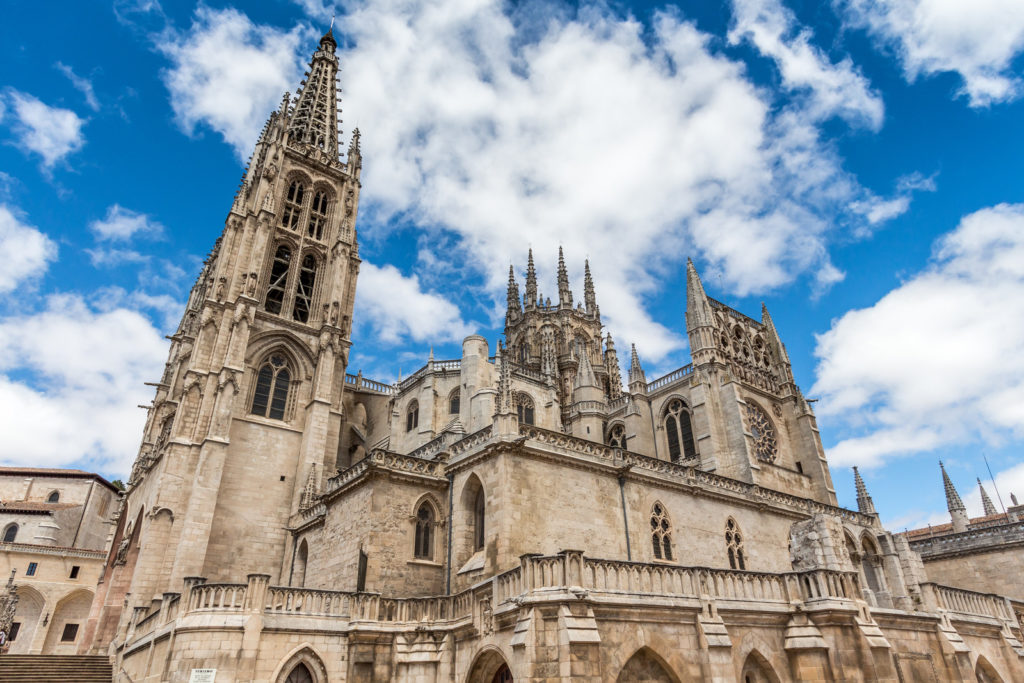
Everywhere you look, whether on the facades or inside the cathedral, you’ll see decoration or carving. The term “el horror del vacío” (“the horror of empty space”) was never so applicable as in the interior of Burgos Cathedral.
The magnificent star-vaulted dome and the spectacular rose windows are awe-inspiring. Also amazing are the gold plating and ornate carvings on the retablo of the high altar that depicts the life of the Virgin Mary.
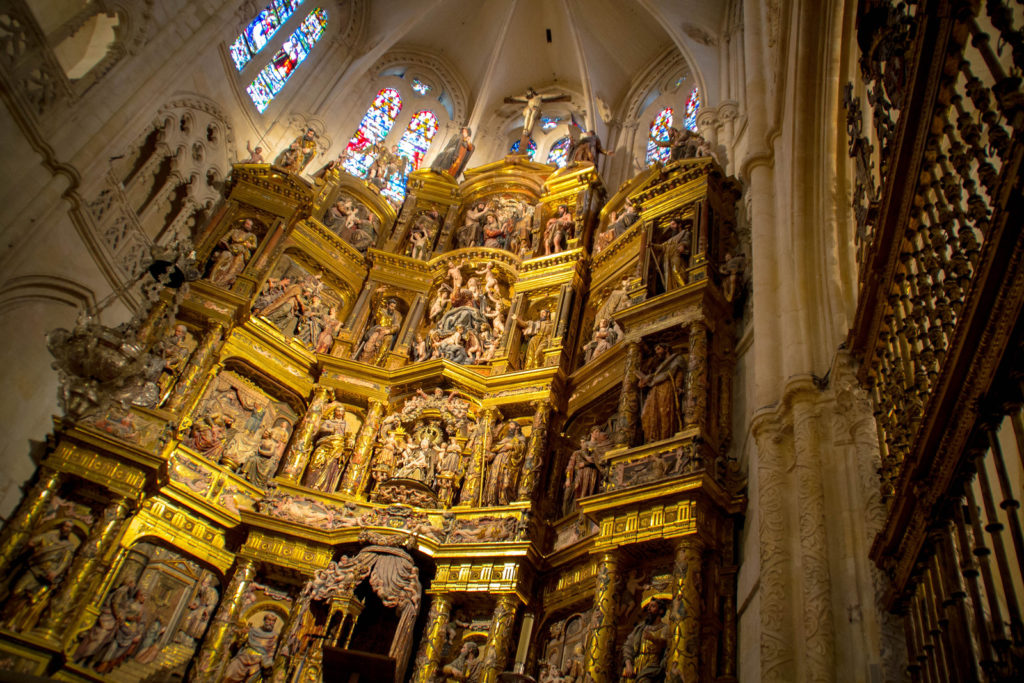
Saints, angels, the nobility, important clergy, and the monarchs appear below the deities—a reminder of God’s absolute power.
One of the highlights in the cathedral is a portrait of Mary Magdalene by Leonardo da Vinci (~1515 ). We also saw one of El Cid’s trunks and a small wooden door with a carved face into whose mouth pilgrims inserted small coins.
If you go, rent the audio guide to learn about the art and architecture. The Cathedral of Burgos ranks alongside the likes of Westminster Abbey, Notre Dame in Paris, and Milan Cathedral—but without the crowds.
Burgos Castle
Include a visit to Burgos Castle, with its original structure and fortifications dating to the 9th century. The small museum is interesting, but the real attraction is the spectacular view over the city of Burgos.
Arco de Santa Maria
The Arco de Santa Maria is one of the twelve medieval doors that led into the medieval city of Burgos. Rebuilt by Charles V in the 16th century, the structure is worth a stop to admire the carvings on the facade. You can go inside to view special exhibitions and a small museum. At night, the Arco de Santa Maria is beautifully illuminated.
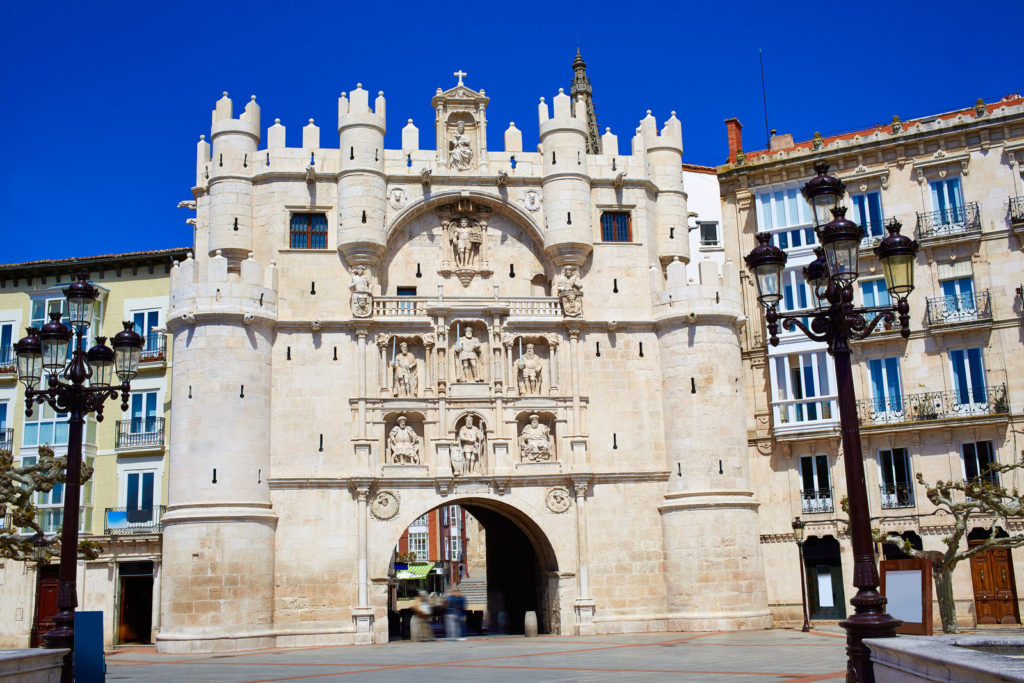
León
León is a delightful small city that is a bit off the beaten path but worth a visit for its magnificent cathedral, beautiful old town, and the chance to stay in Parador de León, Hostal de San Marcos, Spain’s top parador (see description below).
We stayed two nights in León which, like Burgos, is situated on the Camino. In fact, the Camino crosses the large plaza in front of the parador. The distinctive concha design symbolizing the Camino is everywhere in León, including on the facades of the buildings.
Historic Center of León
The historic centre of León is utterly charming, with narrow streets and very old and historic buildings. Some of the architecture incorporates the city walls of Roman times. You’ll find plenty of small and large plazas lined with outdoor cafés and interesting shops.
Take time to wander around the town, even occasionally getting lost while appreciating the beauty of this wonderfully walkable city.
León Cathedral
Often dubbed La Casa de la Luz (House of Light), the 13th-century Catedral Santa María de León is magnificent. Soaring sandstone towers glow in the evening light, and the interior is breathtaking, with three rose windows instead of the usual one.
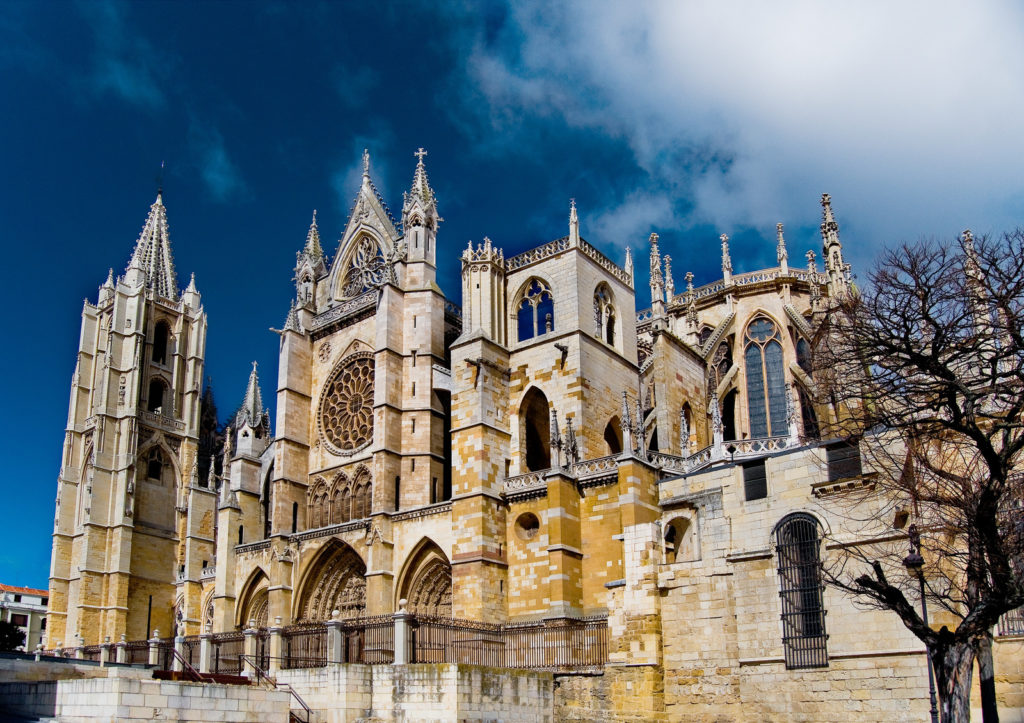
The cathedral was built on the site of the 2nd-century Roman baths, which were converted to a royal palace around the year 1000. A masterpiece of Gothic architecture, the cathedral consists of two towers with a large portal between them, and flying buttresses crusted with gargoyles on the exterior walls.
León is often referred to as the city of stained glass, and no wonder. Windows dating from the 13th to the 15th century contain over 1,800 square meters of stained glass. Also inside the cathedral are hundreds of pieces of sacred art, including examples from Romanesque to Neoclassical times.
León’s cathedral is one of the most important along the Way.
Basilica of San Isidro
Don’t miss the smaller but equally enchanting Basilica of San Isidro. Located on the site of an ancient Roman temple, the church’s Christian roots extend to the early 10th century when a monastery for Saint John the Baptist was erected on the grounds.
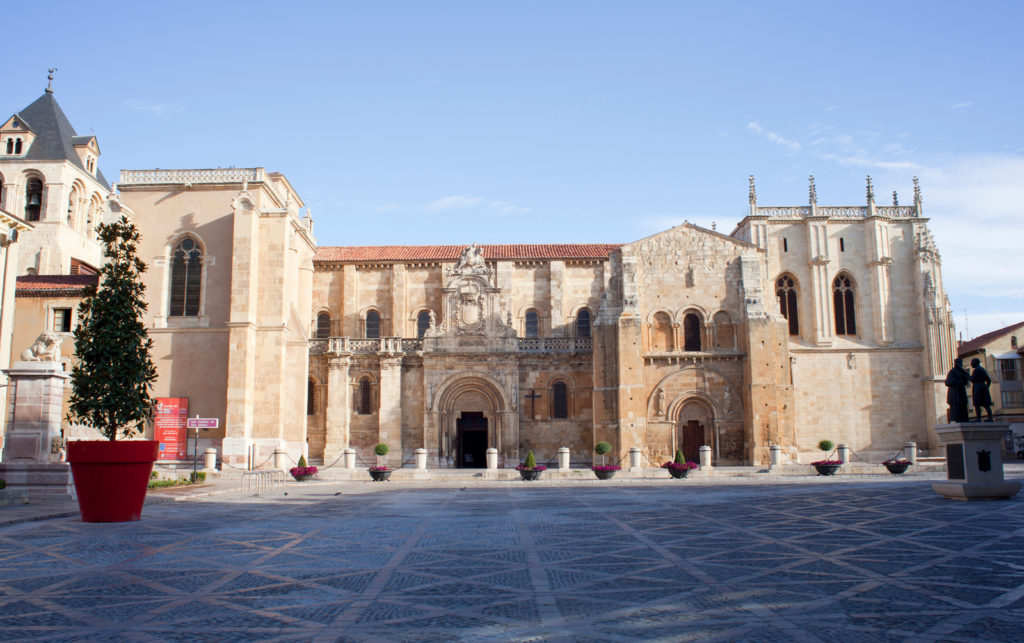
Built in the Romanesque style, the basilica also has elements of both Gothic and Islamic architecture. Check out the 12th-century painted murals in the funeral chapel of the kings of León. The exceptionally well-preserved murals present New Testament subjects as well as scenes of contemporary rural life.
Stay at the Parador de León
The Parador de León is one of the most luxurious places I’ve ever stayed. Sponsored by the Spanish government, the parador system of lodgings includes refurbished historic buildings, such as castles, monasteries, and royal residences. The system also includes some purpose-built, modern hotels.
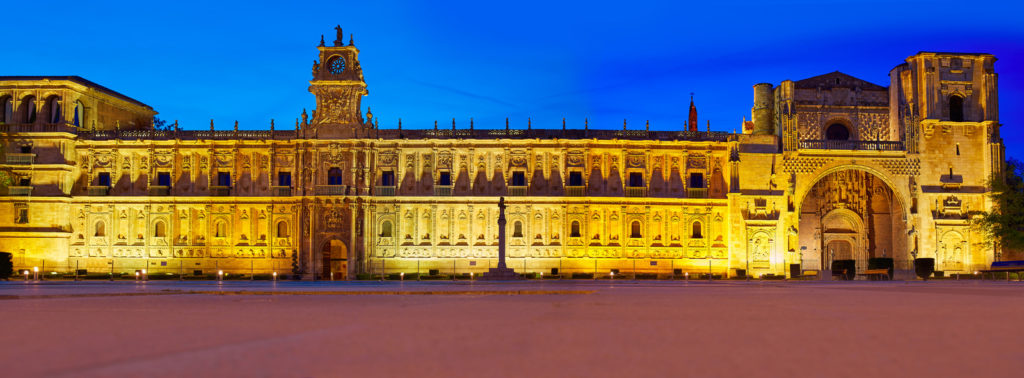
For five-star luxury, we paid about €170 each for two nights—a serious bargain, considering the service and surroundings.
King Ferdinand founded the Parador de León, Hostal de San Marcos in the early 16th century as a church and hospital for knights of the Order of Saint James. Some of the original staircase has been preserved, as have the curved ceilings, chandeliers, and cloister windows. Fabulous portraits and Renaissance artifacts and armour adorn the lobby and corridors.
Our room—which we accessed with a large skeleton key—was located in one of the converted monks’ cells in the cloister. The room was beautifully appointed with 1000-count monogrammed sheets, slippers, and luxury toiletries.
Museum at the Parador
Visit the church and museum attached to the parador. The original buildings were erected on the remains of a Roman fortress, and the church dates from the mid-12th century. Many sarcophagi and Roman stelae from ancient times dot the lovely cloister gardens. Sadly, parts of the church grounds have a darker past when they served as a prison for suspected or accused fighters in the Spanish Civil War.
Conclusion
Even if you’re not walking the Camino, put Burgos and León on your itinerary in northern Spain. For more information about places to visit in northern Spain, including both Santiago de Compostela and Bilbao, see Exploring Northern Spain and Basque Country.
For more about Elizabeth’s journey along the Camino read her Top Tips for Walking the Camino of Santiago and excerpts from her journal in A Camino Journal: Pamplona to Santiago de Compostela.
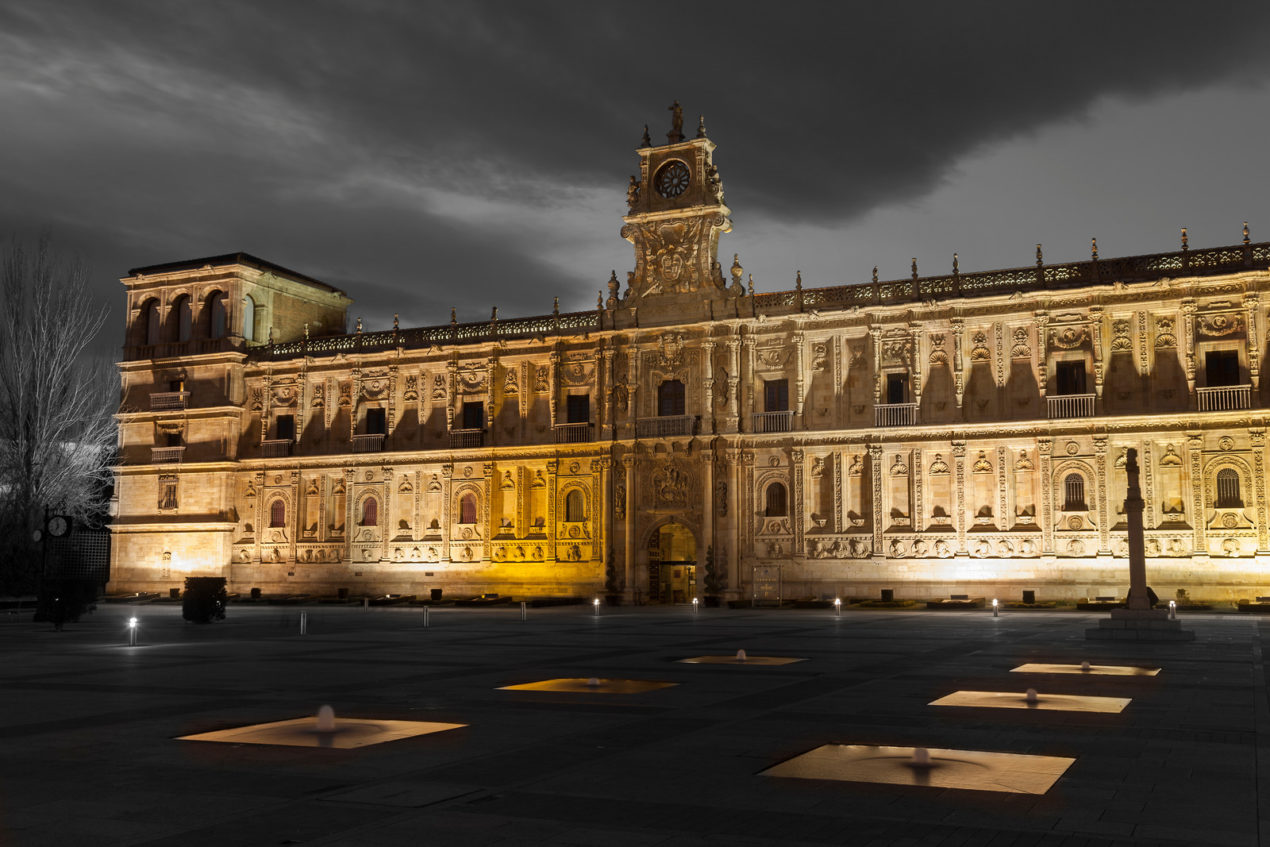
[…] This post includes excerpts from the detailed journal that Elizabeth kept while walking the Way. If you’re interested in walking the Way yourself, read Elizabeth’s recommendations in Top Tips for Walking the Camino to Santiago de Compostela. And for suggestions about what to see and do in beautiful Burgos and León, read Exploring Burgos and León along the Camino of Santiago. […]